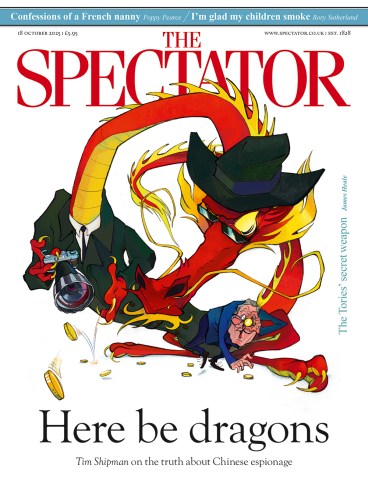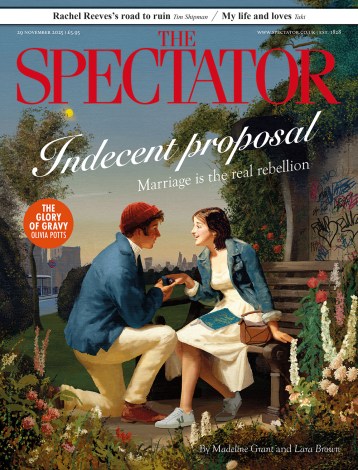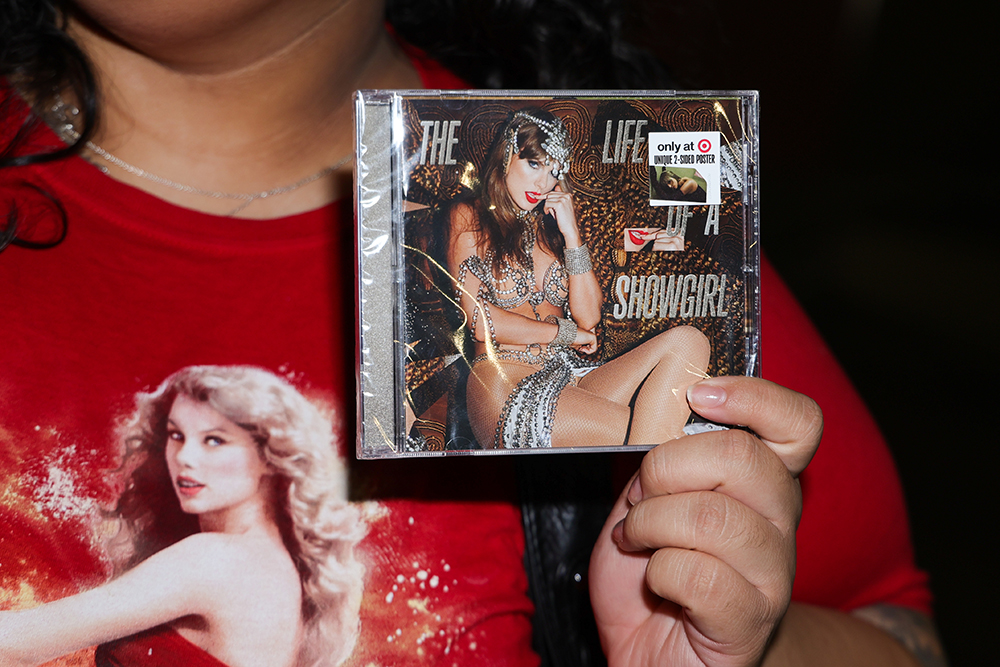
Stephanie Burt is a Harvard professor of English, a poet and a literary critic who recently created and taught a course on ‘Taylor Swift and Her World’. This not only attracted an unusually high degree of student engagement but also international media attention, with, one suspects, greater measurable benefits for Burt and Harvard than for Swift. Now Burt has produced Taylor’s Version: The Poetic and Musical Genius of Taylor Swift.
The thesis is that Swift is a hugely successful artist because her songs are both ‘relatable’ and ‘aspirational’
The title suggests the sort of literary and musicological analysis that has been devoted to singers such as Morrissey (most brilliantly by Gavin Hopps) and Bob Dylan. But Swift – for all the glancing references to Shakespearean characters and allusions to Robert Frost – is not, and doesn’t aspire to be, a literary songwriter. Poets are more of interest to Swift for the mythologies around them (the exilic Lake poets; tortured Sylvia Plath; tragic Dylan Thomas) than their literary techniques. Burt’s book does not, in any case, deliver that sort of analysis. It is instead a curious hybrid of slangy fangirl excitement and a veneer of scholarship. Literary and academic touches are deployed more for prestige than illumination.
The thesis is that Swift is a hugely successful artist because her songs are both ‘relatable’ and ‘aspirational’. That little pairing occurs more times than I was able to count in a stylistically repetitive chronological journey through the albums. Over and again, Burt excitedly explains which bits of an album are relatable and which aspirational. Sometimes a song doesn’t seem to fit the schema at all – but that’s fine, too, because it will be made to fit. ‘Again, what’s relatable also becomes aspirational: what if your own worst experience ever involved your movie actor boyfriend failing to fly in for your birthday party?’ What if, indeed. Effectively, any of the commonplace feelings and experiences of Swift’s songs (indeed, of most songs) – fancying the right or wrong person; being dumped; being betrayed by friends – are ‘relatable’; and all the other bits of ‘Taylor’s world’ – the money and the fame and the celebrity friends – become ‘aspirational’.
Burt’s literary treatment of Swift requires some notable stretches. For example, the song ‘All Too Well’ is ‘not only romantic (that is, about romance and breakups) but also capital-R, lit-crit-style Romantic’ – apparently because it suggests that people get older but the seasons are cyclic. This is a low bar for entry, but it allows Burt to quote Keats’s ‘Ode to Autumn’, by analogy, and then the distinguished critic Helen Vendler on Keats. Usually Burt performs this sleight of hand without further comment, but here she grudgingly concedes an obvious point: ‘I do not want to claim that Swift has read Vendler’s The Odes of John Keats… nor do I mean that “All Too Well” is somehow the equal… of “To Autumn”,’ before triumphantly concluding: ‘I do mean, though, that the words and music… echo Keats’s accomplishment.’ A subtle distinction.
Although that ‘lit-crit style’ is surely what qualifies Burt to write this book, its deployment oscillates between embarrassment and condescension. A nadir comes when she quotes the lines ‘I feel so high school every time I look at you / But look at you’ and tells us that ‘literary critics (like me) call that syllepsis. Swifties (like me) call it fun.’ But it is not syllepsis; it is antanaclasis. When she writes ‘Who will take care of these care-givers? runs the Latin proverb Quis custodiet ipsos custodes? We may not, but Taylor will’, she fails to attribute the line to Juvenal, significantly mistranslates it and performs wide-eyed hero-worship in the space of two sentences.
The entire book proceeds in a sort of headlong gush. Admittedly, it’s not wholly uncritical. For example, Swift is ticked off for using ‘gay’ as a pejorative in early versions of ‘Picture to Burn’ (but not for using the term ‘redneck’, one notes); and her use of black musical styles in Reputations makes Burt very anxious: ‘Is the whole album an act of appropriation? Is anything here okay?’ On Swift’s response to Kanye West’s boorishness, Burt has a rare lapse into full-on jargon: ‘Arrogating to herself the right to decide how and when to forgive, Swift made herself a vehicle for white privilege.’
Mostly, though, Burt insistently draws parallels between Swift’s lyrics and the typical experiences of teenage girls (‘We can feel ourselves into this situation, friendzoned by the boy of our dreams’) to whom much of the book is addressed in prose aspiring to the condition of inspirational slogans. Exactly halfway through, Burt shares the information – in a parenthetical aside – that she came out as trans late in life. In a recent interview she spoke about this in more detail, and about the ‘girlhood she never got to live’. Might this partly explain the intensity of her focus on ‘relatability’ and ‘aspiration’? Beneath its superfan surface Taylor’s Version is perhaps less about Swift – a brilliant but unknowable songwriter, performer, semiotician and businesswoman – than about an idea, or ideal, of girlhood.








Comments